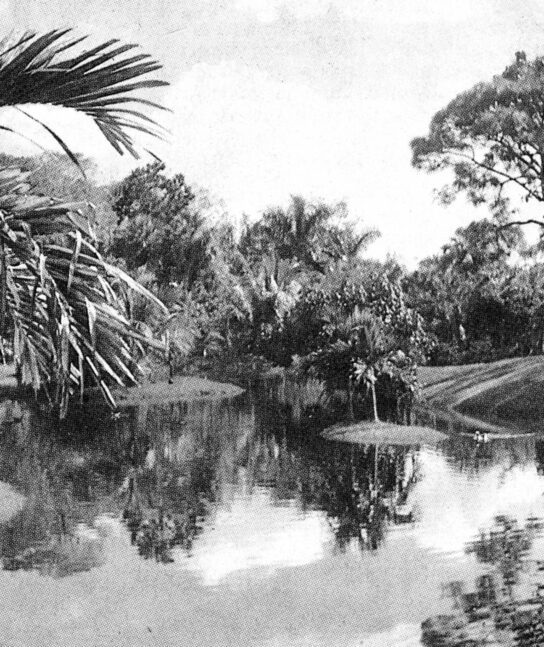In 1952, the grounds, having laid dormant since Nehrling’s passing in 1929.
Were revived by Julius Fleischmann to their horticultural glory, as he turned them into a jewel box of rare plants and exotic birds he had shipped to Naples from all over the world.
The Gardens were also home to the second largest collection of free-roaming wild waterfowl in the world, surpassed in variety only by the collection at the London Zoo.
Eleven lakes were excavated and filled from artesian wells on the grounds. Six-acre Sanctuary Lake, the largest, was studded with islands and designed with a sloping bottom to provide the various depths based on the requirements each species of waterfowl, and a deep hole specifically designed for diving ducks.
Located in the center of the grounds, the Gardens’ main attraction was the 3,000-plant Orchid Cathedral, described as a breathtaking spectacle of brilliant tropical orchids from America and Asia, and an orchid and rare plant breeding supply center, where scientists experimented in shortening the germination period of powder-fine orchid seeds.
Easter Sunrise Service had been held on the Naples Pier until 1949, when it began being held on the vacant parcel at the northwest corner of Broad Avenue South and Third Street. In 1950, the service was transferred to Cambier Park.
In 1954, Easter Sunrise Service was relocated from Cambier Park to the Caribbean Gardens Sunrise Amphitheater, constructed on the shores of Sanctuary Lake. The natural setting lent a special serene aura to the day of worship.
Two years later the annual service at Caribbean Gardens began being sponsored by the Naples jaycees and the Naples Ministerial Association. The Jaycees arrived at 3:30 am on Easter Sundays, prepared 20 gallons of coffee and set out donuts for the 400 worshipers whose attendance grew in number to 750 by 1962 and 1,800 in 1969. During the year, the Sunrise Amphitheater was used for musical performances and other outdoor community events.
